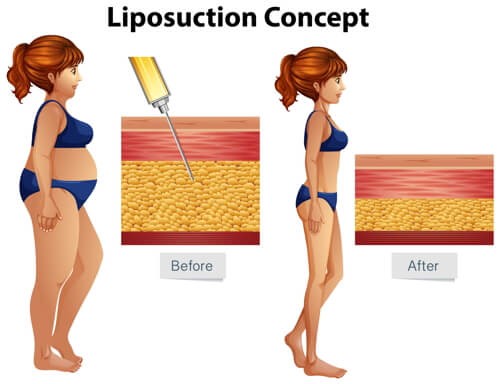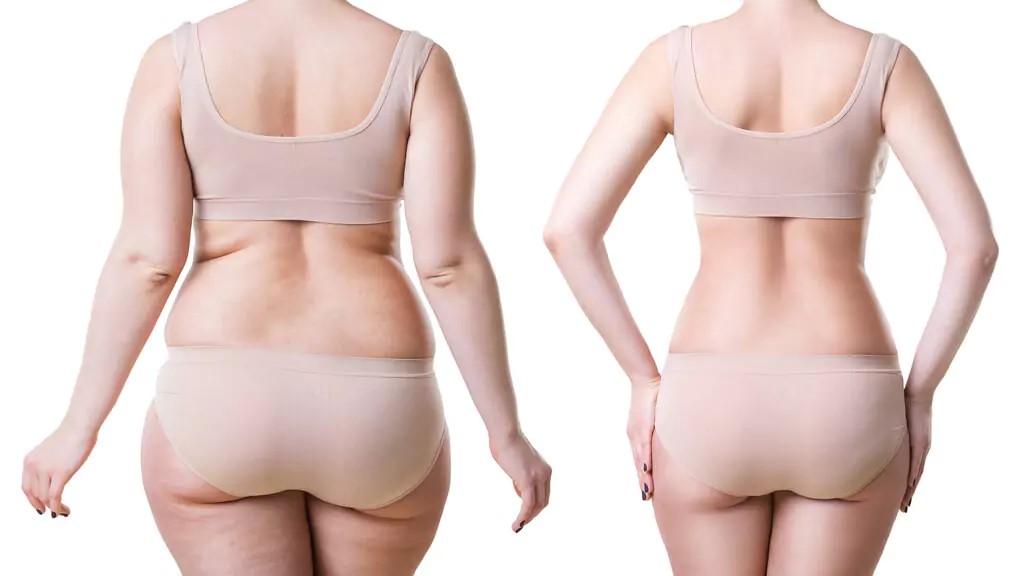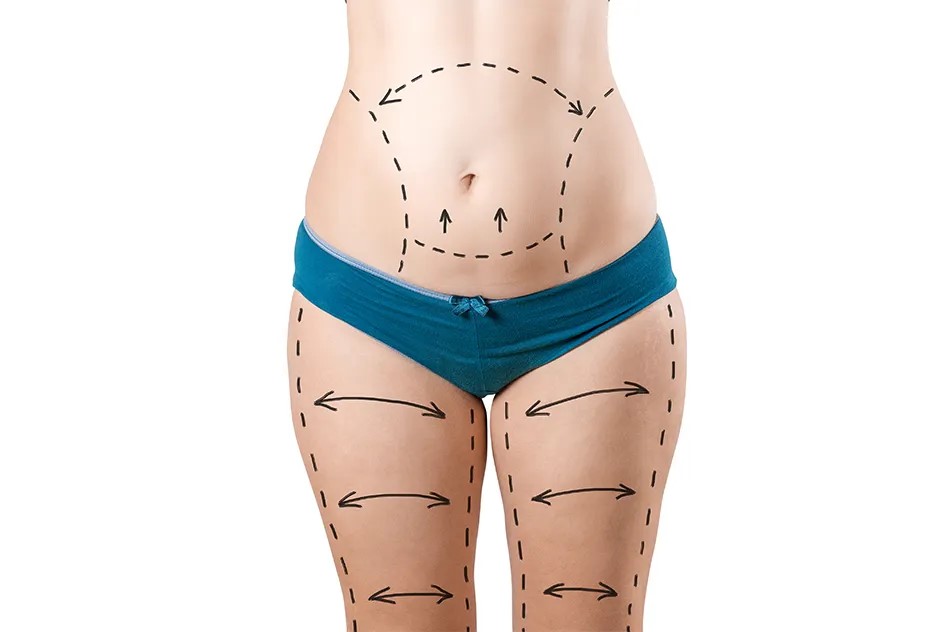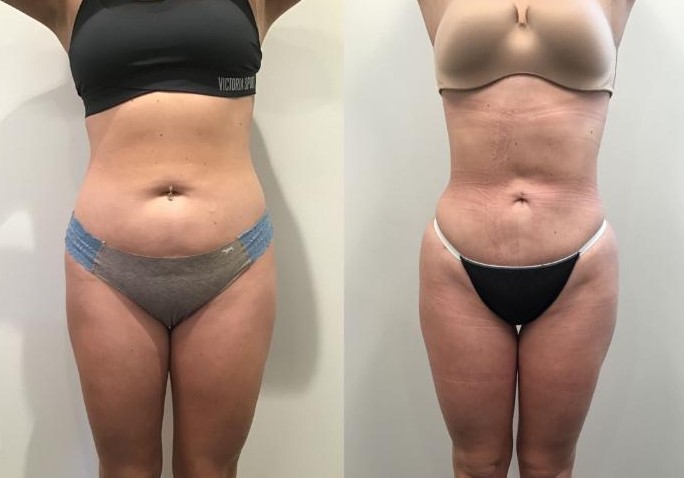Liposuction: What You Should Know
Liposuction is a cosmetic procedure used to remove unwanted body fat.
It involves sucking out small areas of fat that are hard to lose through exercise and a healthy diet. It’s carried out on areas of the body where deposits of fat tend to collect, such as the bottom, hips, thighs and tummy.
The aim is to alter body shape, and the results are generally long-lasting, providing you maintain a healthy weight.
It works best in people who are not overweight and in areas where the skin is firm and elastic.
Liposuction carried out for cosmetic reasons is not normally available on the NHS. However, it’s sometimes used by the NHS to treat certain health conditions, such as:
- lymphoedema – a long-term condition that causes swelling in the arms and legs
- lipoedema – a condition where there is an abnormal build-up of fat in the legs, bottom and thighs
If you’re considering having liposuction for cosmetic reasons, think very carefully before you go ahead. It can be expensive, the results cannot be guaranteed, and there are risks to consider. Speak to your GP about it.
LIPOSUCTION COST IN IRAN
While Iran measures up to many medical tourism destinations in terms of quality, expertise, and efficiency, it offers lower prices than other countries. For example, prices for a typical liposuction procedure in Iran start at $700 per area, including anesthesia, medication, clinic and doctor fee, follow-up, etc.
With the affordable cost of liposuction in Iran, there would be a 70-80% saving for those who choose this country over other countries. The cost of this procedure in the USA ranges from $2,000 to $5,000 per area. This price falls somewhere between $2,000 to $6,000 if you are going to have it done in a European country like the UK. It costs around $2,500, $1,500, and $2,000 per area in Turkey, India, and Thailand, respectively.
 WHY IS IRAN A GOOD PLACE FOR LIPOSUCTION SURGERY?
WHY IS IRAN A GOOD PLACE FOR LIPOSUCTION SURGERY?
Iran is a country that almost in no time has made it to the top of the cosmetic surgery industry across the globe. The key reasons behind this are advanced medical facilities, experienced surgeons, proven records of successful surgeries, and unrivaled prices. These advantages have caught the eyes of many foreigners who want to travel to get their bodies fit in this country.
With the high number of successful liposuction surgeries and the geographical location of the country, Iran’s also becoming a popular destination for citizens of neighboring countries like Iraq, Oman, Kuwait, Azerbaijan, and Afghanistan.
Further to this, Iran welcomes patients with cost-effective surgery and zero waiting time. These aspects serve as a strong motive for those who are in search of an affordable and immediate course of fat removal.
Who is a candidate for liposuction?
Candidates for liposuction should meet certain requirements to make sure their procedure is effective and safe. Candidates who qualify for a liposuction procedure include:
- Adults with an average or slightly above-average weight.
- People who have firm skin with elasticity (high in the elastin protein) and a good muscle tone.
- Adults who have good overall health.
- People who have pockets of fat that don’t respond well to diet and exercise.
- Nonsmokers.
- People with realistic goals for the outcome of the procedure.
These are common qualifications that healthcare providers evaluate before recommending treatment. Your provider will let you know if liposuction is right for you.
Who might not be a candidate for liposuction?
Certain factors could cause a liposuction procedure to be unsuccessful or pose a threat to your overall health. You might not be a candidate for liposuction if you:
- Are underweight.
- Have a BMI over 25.
- Have a serious, life-threatening health condition or a condition that can make healing difficult.
- Have unrealistic expectations for the procedure.
- Have poor skin quality.
Liposuction alone can’t improve saggy, loose skin. This is common after significant weight loss. If your goal is to get rid of loose skin, your healthcare provider might recommend liposuction along with excess skin removal.
You might consider having a liposuction procedure if you:
- Tried dieting and exercising for several years and certain areas of your body don’t respond or refuse to shrink naturally.
- Want to smooth out fatty bulges on your body.
- Want a permanent body modification.
- Can dedicate four to six weeks for your body to recover after surgery.
Procedure Details
What are the types of liposuction surgeries?
There are different types of liposuction procedures available to meet different goals of your treatment. Different types of liposuction include:
- Tumescent liposuction: Tumescent liposuction is the most common liposuction procedure. Your surgeon injects a saline (salt water) solution into your fatty areas. The mixture contains medicines such as epinephrine, which shrinks your blood vessels. This solution helps your surgeon remove fat easily and reduces blood loss. Other medications are sometimes included to provide pain relief.
- Ultrasound-assisted liposuction (UAL): Your surgeon uses ultrasonic energy via a metal rod placed underneath your skin to liquefy your fat before removing it from your body.
- Vibration Amplification of Sound Energy at Resonance (VASER): VASER liposuction uses a stainless steel tool (cannula) with grooves and ultrasound waves to easily break up and remove fat cells and fat from your body. This is a type of UAL.
- Suction-assisted liposuction: Suction-assisted liposuction is a traditional form of liposuction that uses a vacuum to remove fat from your body.
- Power-assisted liposuction (PAL): Power-assisted liposuction uses a small, stainless steel tool (cannula) that moves back and forth over your fat to break it up. The cannula makes removing fat easier for your surgeon and the procedure is more precise.
- Laser-assisted liposuction (Smartlipo™ and SlimLipo™): Your healthcare provider will use strong laser lights on a small, flexible tube (fiber) to break down and liquefy your fat to simplify removal. Laser-assisted liposuction only needs a small incision in your skin to perform the procedure.
Your healthcare provider will discuss the types of liposuction and make a recommendation based on your desired goals before your procedure.
 What happens before a liposuction procedure?
What happens before a liposuction procedure?
Before your liposuction procedure, you’ll meet with your surgeon. During this consultation, you’ll discuss:
- Your skin type.
- Which liposuction option is best for you.
- The effectiveness and safety of the procedure.
- Realistic expectations of the procedure.
- Costs.
- Your complete medical history, including discussing any allergies and medications you currently take.
- Any other questions or concerns you have.
If you’re considering liposuction, it helps to have realistic expectations and goals. Liposuction treats specific areas of your body. It’s not a cure for obesity. Having liposuction doesn’t prevent you from gaining or regaining weight.
How do I prepare for liposuction surgery?
Your surgeon will give you specific instructions to follow before your liposuction surgery. You may need to:
- Follow dietary or alcohol restrictions.
- Take or avoid certain medicines and vitamins.
- Get lab testing.
- Stop smoking.
What happens during liposuction surgery?
Before your liposuction procedure, your healthcare provider will give you anesthesia. You may have local (just in the surgical area) or general anesthesia (which puts you to sleep). Anesthesia makes it so you don’t feel pain during your procedure.
Once the anesthesia starts working, your surgeon will make small incisions in your skin. They’ll insert a suction device attached to a small, stainless-steel instrument called a cannula into the fatty areas between your skin and your muscle. Your surgeon will move the cannula around inside of your body to break up or liquefy your fat. Then, they’ll remove excess fat with a suction pipe or large syringe. When your surgeon completes the procedure, they’ll close up the incision site with stitches that are either dissolvable or non-dissolvable.
Your specific procedure depends on the type of liposuction you’re having. It may be an outpatient procedure at your provider’s office or you may go to a surgery center. If your surgeon is removing large amounts of fat, you’ll need to go to a hospital and may need to stay overnight. Even for an outpatient procedure, you’ll need someone to drive you to and from the surgery. How long liposuction surgery takes depends on how much fat your surgeon is removing and the number of areas treated.
What happens after a liposuction procedure?
After your liposuction procedure, your healthcare provider will talk to you about:
- How to care for your surgical site.
- Medications you may need.
- Your follow-up appointments.
- Complications to watch out for.
While a liposuction procedure can remove fat and fat cells from certain areas of your body, it’s important to keep in mind that you can still gain weight after liposuction. After your recovery, your provider will discuss your results and how you can maintain your new shape after surgery.
As you recover, you may have signs of healing on your body that include:
- Bruising.
- Swelling.
- Soreness.
These signs will fade as your body heals. If your pain is severe, talk to your healthcare provider.
To speed up your recovery time or to help reduce the amount of swelling and pain your feel, you may need to wear a compression garment on the treatment area for several weeks. These garments reduce swelling and help your skin adapt to its new contours. In some cases, you may need a temporary drain in the incision to remove excess blood or fluid. Your provider will offer guidance on your recovery time, especially what to look out for and how to ease discomfort.
Is liposuction painful?
During a liposuction procedure, you won’t feel any pain because your surgeon will use anesthesia. You may experience pain, tenderness or soreness after your procedure for a couple of days, which most people describe as “burning.” Your provider might offer medication to help relieve your discomfort or special wraps or compression garments that you can wear to reduce swelling. Compression garments are tight against your skin but don’t cut off your circulation.
Risks / Benefits
What are the benefits of a liposuction procedure?
The benefits of liposuction include:
- A solution to remove stubborn areas of fat from your body that don’t respond to diet and exercise.
- A smoother body shape so your clothes fit better.
- A minimal amount of scarring after the procedure.
What are the risks or complications of a liposuction procedure?
Every surgery comes with risks. Liposuction has a good safety record. The risks are limited when you choose a trained, board-certified plastic surgeon. Smaller areas of fat removal involve a shorter procedure with the fewest risks.
Although rare, liposuction risks include:
- Infection.
- Skin discoloration or changes in skin sensation.
- Bruising.
- Swelling or poor wound healing.
- Pain or discomfort until your surgical site heals.
- Scarring.
- Bleeding.
- Contour deformities.
What is the recovery time for liposuction?
Your surgeon will talk to you about your specific recovery time. Each person’s recovery is different, depending on how much fat your surgeon removes and from which area they removed it. On average, it can take up to six months to heal completely. During some of this time, usually the first six weeks, you’ll need to relax and reduce the number of activities you perform to let your body heal.
When can I return to my regular activities after surgery?
If you had an outpatient procedure, you can likely return to work within a few days. You can expect to feel like yourself again about two weeks after surgery. It can take up to six weeks until you’re able to go back to your regular physical activities like exercising
























